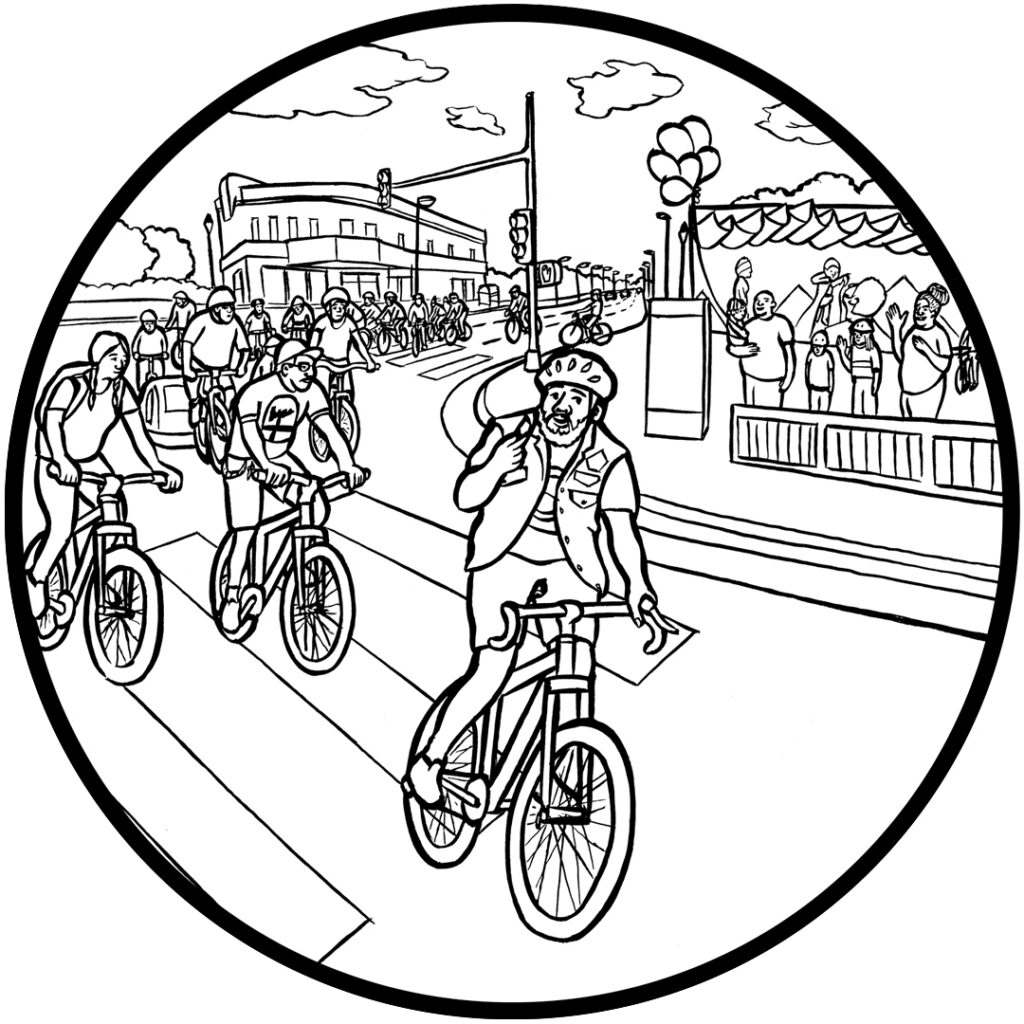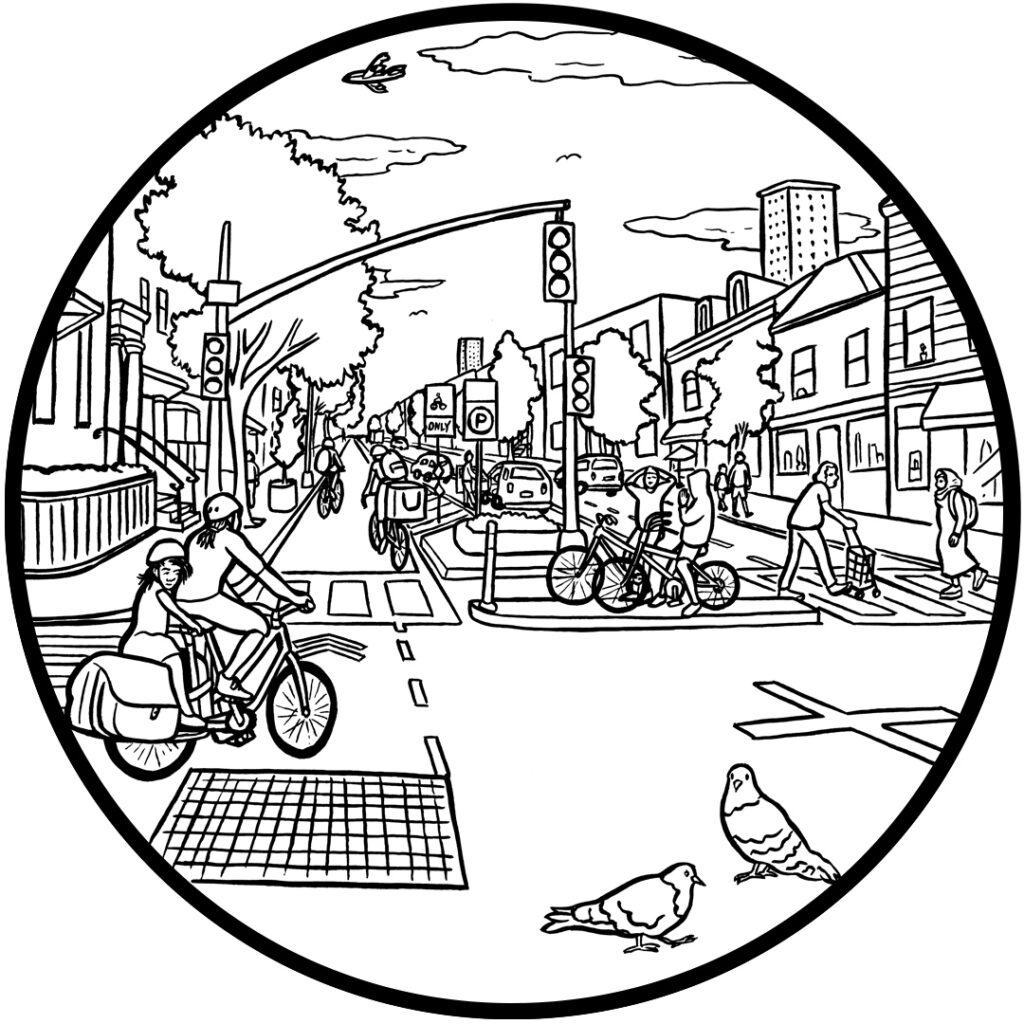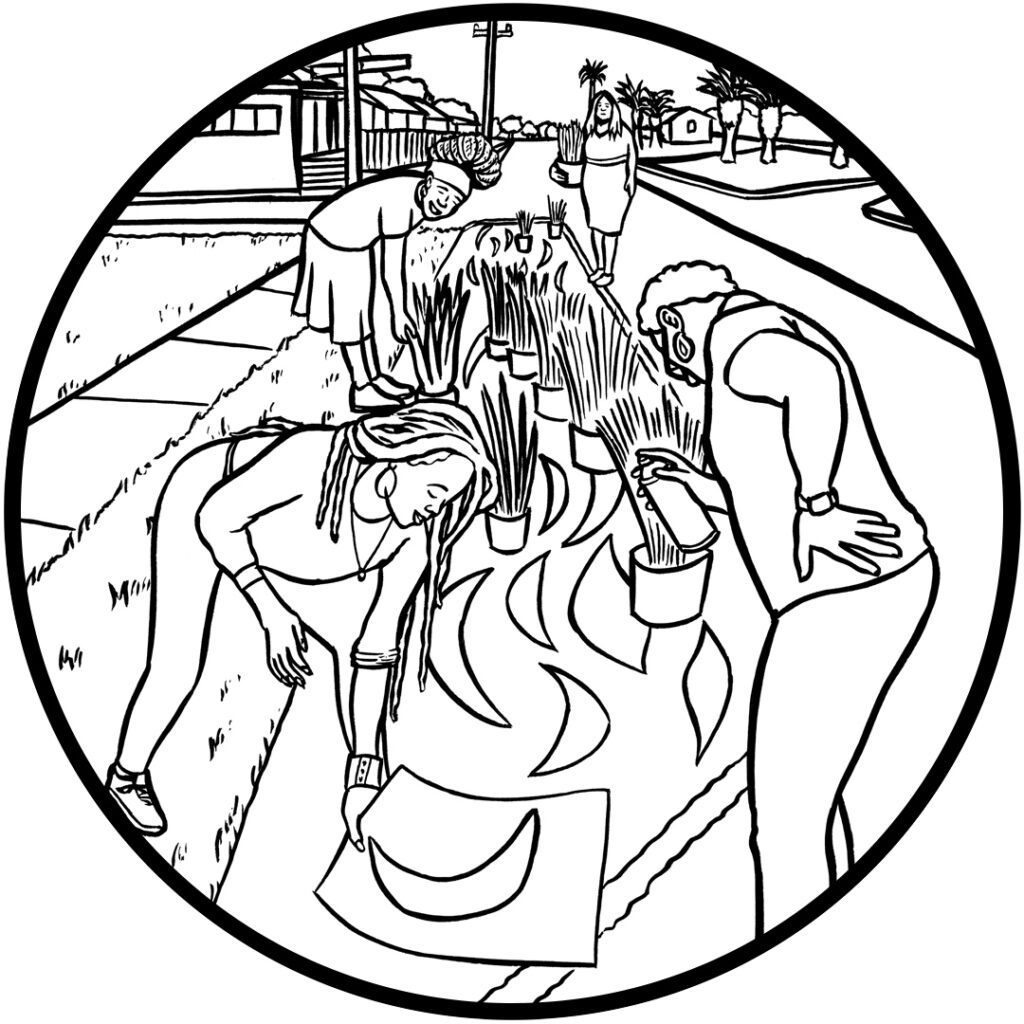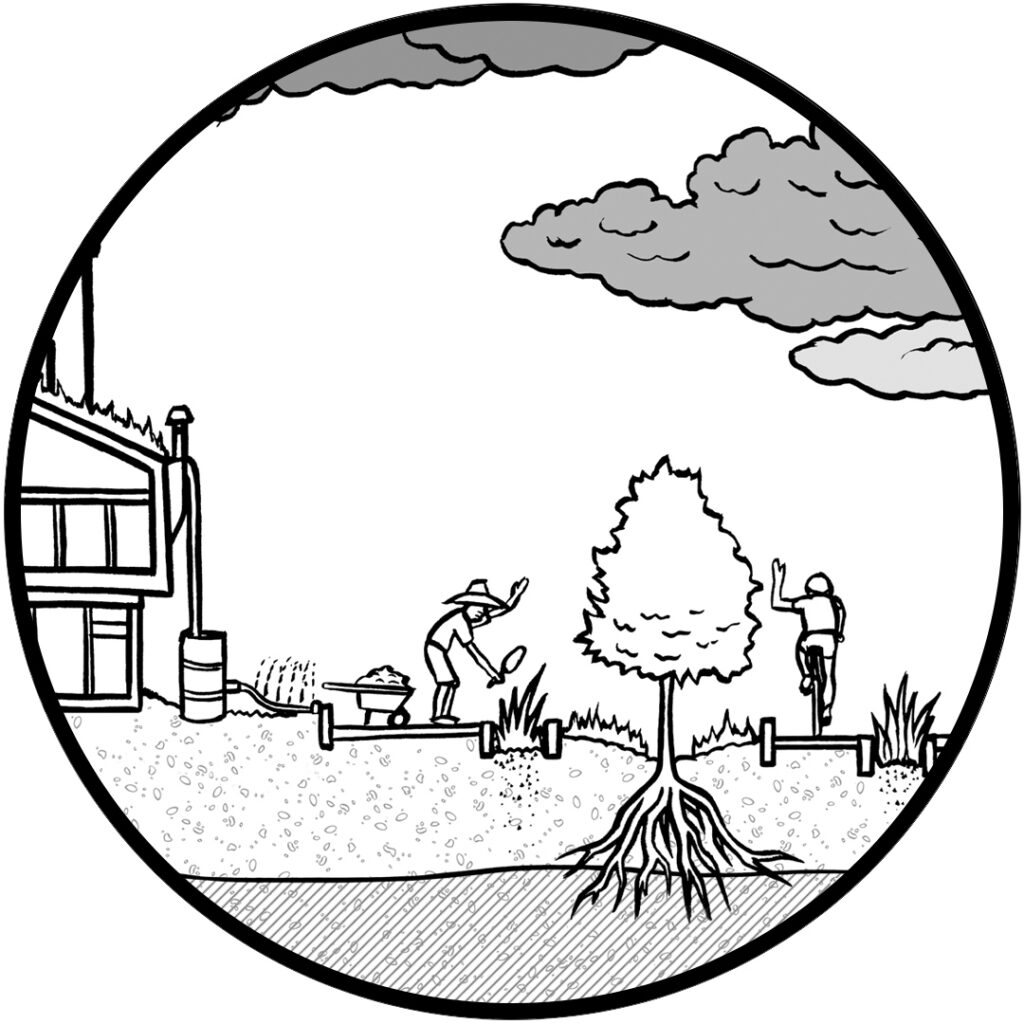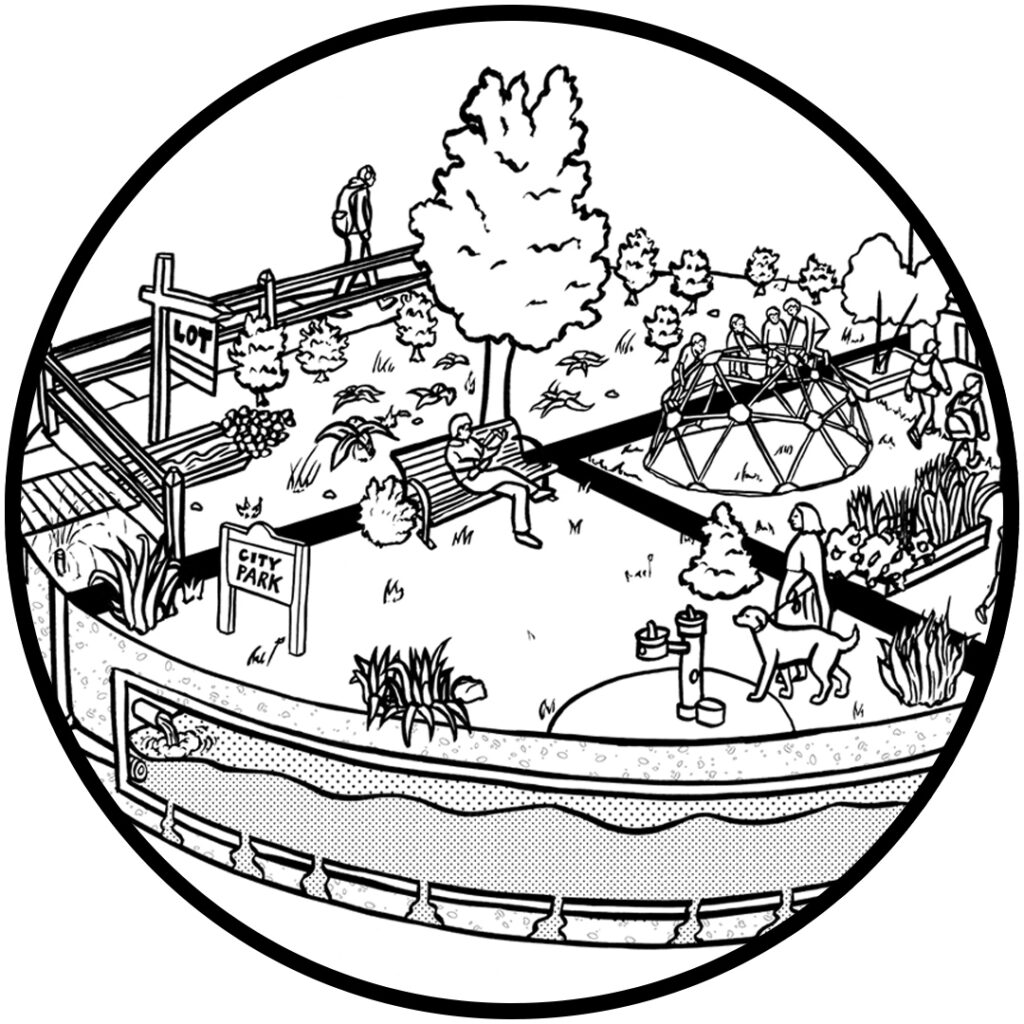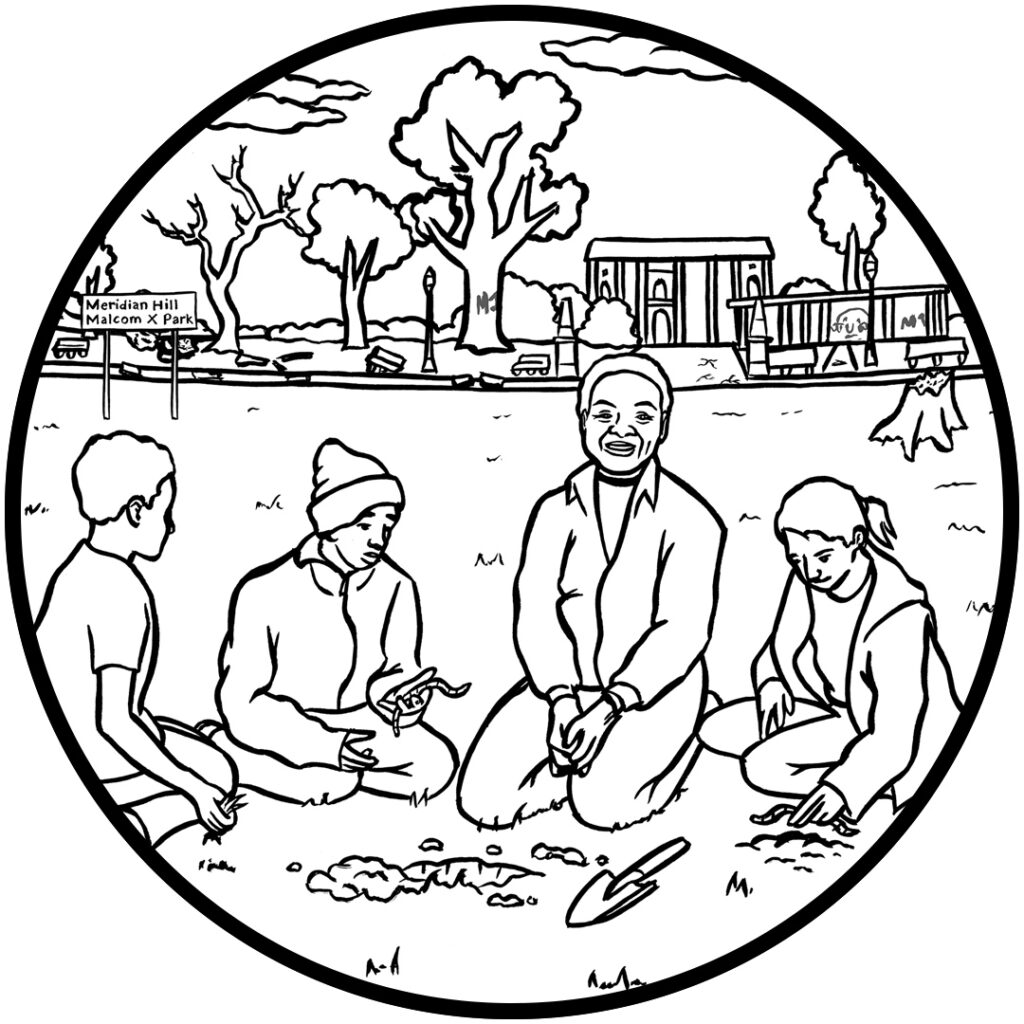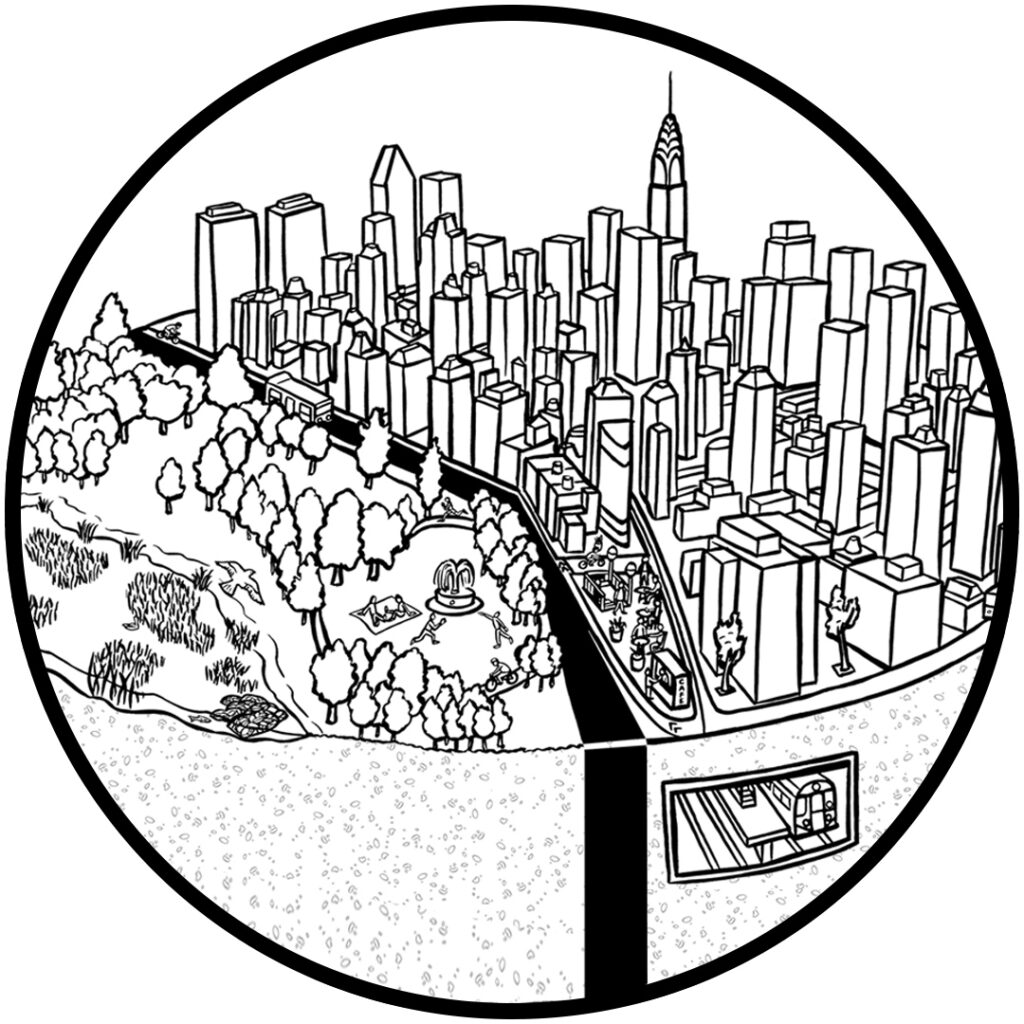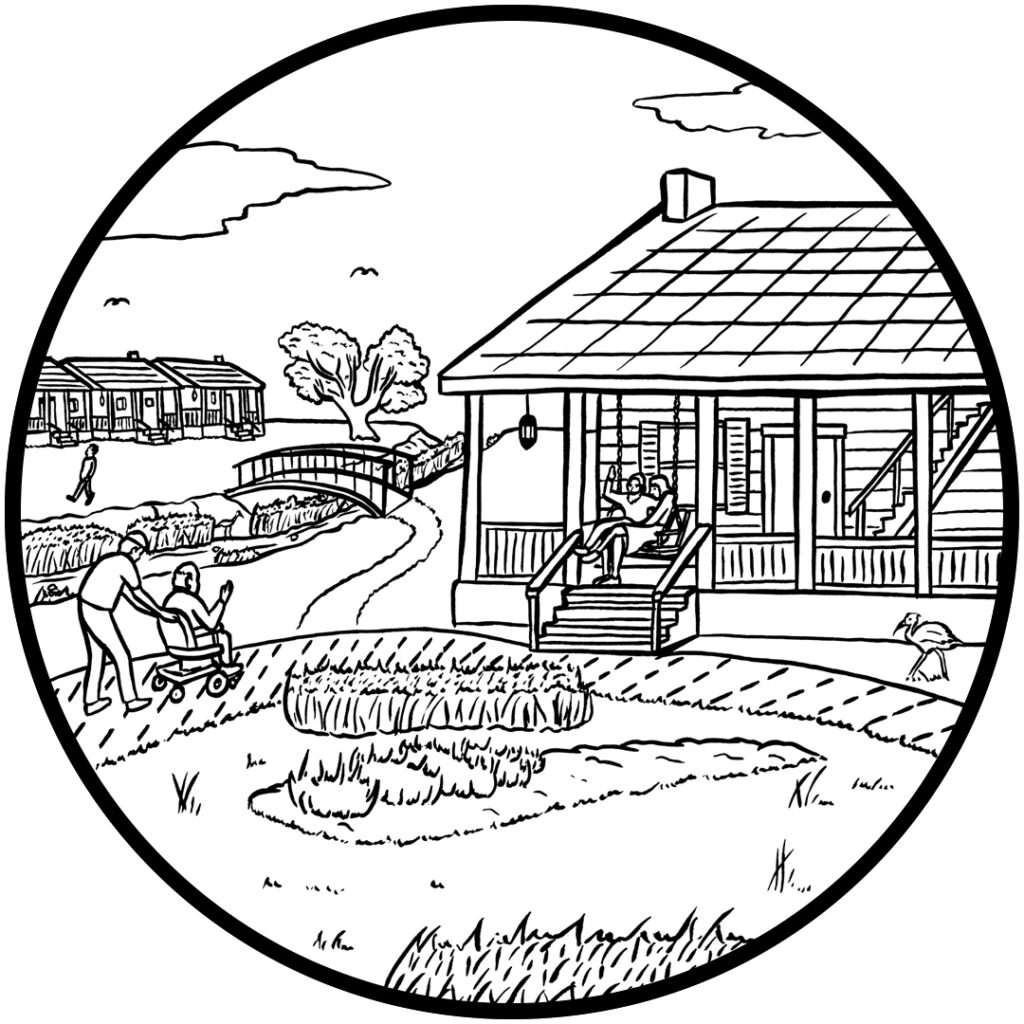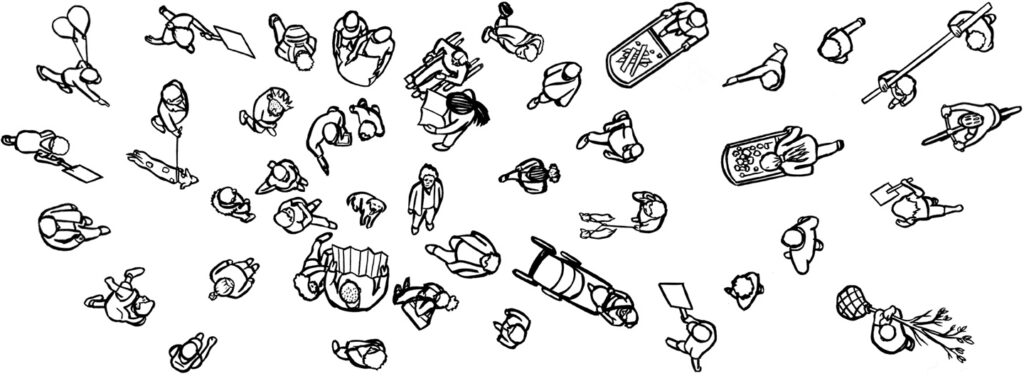
Organizations
Below is a selection of organizations featured in From the Ground Up. Visit their websites to learn more about them and support their remarkable work.
Part 1: Reclaim the Streets
Urban Alchemy is a social enterprise that positively transforms chaotic and violent streets through the benevolent presence of their “practitioners.” They create economic opportunities for men and women, who have been previously incarcerated, valuing their emotional intelligence as an essential skill in meeting the challenges of neighborhoods traumatized by extreme poverty, homelessness, mental illness and addiction.
“By the time we’re done with this, you’ll never hear ‘I can’t breathe’ again.”
—Lena Miller, Urban Alchemy, San Francisco
Northside Greenway Now! is a grassroots project bringing investment in active transportation infrastructure to North Minneapolis. They host community bike rides, neighborhood block parties and other events aimed at engaging residents in the planning process by sharing local knowledge and building a common vision to shape investment in their neighborhood.
“I’m hoping that we can be a prototype going forward for what greenways could look like, particularly because we are always coming up behind and getting the scraps.”
—Will Lumpkins, Northside Greenway Now!, Minneapolis
Bedford Stuyvesant Restoration Corporation
The Bedford Stuyvesant Restoration Corporation has worked for over 50 years to close the racial wealth gap and bring tools and opportunites to Central Brooklynites. As one of the first community development corporations in the United States, it catalyzes economic, cultural, and educational improvements through community action.
“The big, hairy, audacious goal was to see if we could get the composition of Citi Bike ridership to reflect the community.”
—Tracey Capers, Restoration, New York City
Part 2: Tear Up the Concrete
Healthy Community Services is a grassroots organization based in the Seventh Ward of New Orleans, a community hard hit by storms and flooding. As part of the city-wide Waterwise Gulf South Network, they focus on community education and climate resilience by advancing green infrastructure. As a result of their leadership, the Seventh Ward has become a model for community-led green infrastructure projects.
“Five years ago, no one knew what green infrastructure was. Now, it’s not just in my driveway—any number of residents around here have a green infrastructure intervention. People got the chance to identify flooding in their part of the neighborhood and decide what solutions they wanted.”
—Angela Chalk, Healthy Community Services, New Orleans
Verde is a community-based non-profit organization working to bring infrastructural investments to the Cully neighborhood in Northeast Portland. Through their social enterprises, Verde expands economic opportunties for local residents, including job training and employment programs building out the city’s ambitious green infrastructure projects.
“Our crews came from the community. They were able to get trained on these public projects, but eventually they got to work everywhere in the city.”
—Ricardo Moreno, Verde, Portland
Trust for Public Land, Pennsylvania
TPL works with communities around the country to create and conserve parklands. In 2017 they launched a national advocacy campaign to ensure that all urban residents live within a 10-minute walk of a high-quality park or green space.
“Folks came together for the first time. They got to see that although they thought there were big differences between them, there were actually many similarities. Everybody wanted safety. They wanted green space. They wanted something open and accessible for all.”
—Danielle Denk, Trust for Public Land, Philadelphia
Part 3: Plant the City
Washington Parks and People, founded by community-leader Josephine Butler, has worked in Washington DC for more than thirty years to revitalize parks in underresourced neighborhoods and connect people to parks and urban waterways. Their Green Corps program offers residents pathways to long-term employment in urban forestry while working to expand and maintain tree canopy in their community.
“A rock, a river, a tree—a park for all people.”
—Josephine Butler, Washington Parks and People, Washington DC
The Natural Areas Conservancy supports the long-term health of New York City’s natural areas through on the ground management, restoration projects, planning, assessment, and volunteer engagement. Their mapping of New York’s natural areas determined that more than 40 percent of the city’s land is green.
“We need to balance the human experience, biological preservation, and ecosystem benefits. My feeling is that in many cases, those things are aligned.”
—Sarah Charlop-Powers, Natural Areas Conservancy, New York City
Started as a collaboration between the US Forest Service and the non-profit organization Humanim, the Baltimore Wood Project trains and employs formerly incarcerated people in deconstructing Baltimore’s overwhelming number of abandoned buildings. By deconstructing these buildings and salvaging the wood and other materials in them, which was once destined for landfills, the project is providing jobs and sequestering carbon.
“We have pockets in the City of Baltimore where we have 20 to 25 percent unemployment. For the folks in those neighborhoods, there was no on-ramp to that employment highway. Our job is to create the on-ramp.”
—Jeff Carroll, Formerly of Humanim, Baltimore
Part 4: Adapt the Shoreline
CHAPTER 10

Literacy for Environmental Justice
Literacy for Environmental Justice (LEJ) grew out of the environmental justice movement in Bayview-Hunters Point, which successfully mobilized a community coalition to shut down a PG&E power plant in the late 1990s. Today, LEJ continues to engage local youth, school groups and community volunteers to restore native habitat along San Francisco’s southern waterfront.
“In the shadow of the Hunters Point power plant and the political movement to close it down, we were making progress on the restoration of [Heron’s Head] park and creating a vision for the EcoCenter.”
—Patrick Marley Rump, Literacy for Environmental Justice, San Francisco
The Billion Oyster Project aims to restore the health of the New York Harbor and its oyster population through public education initiatives. Headquartered on Governor’s Island, and integrated into the Harbor School, they grow oysters in their nurseries, install and monitor oyster reefs throughout the estuary, and recycle oyster shell to be repurposed in future reef systems–all while engaging New Yorkers in the process.
“One billion oysters is a big deal, it’s an ambitious goal, but it’s also attainable. It’s a tiny, tiny fraction of what used to be here… We definitely think of oyster reefs as part of an integrated solution to rising water levels and more intense storms.”
—Peter Malinowski, Billion Oyster Project, New York City
Louisiana’s Strategic Adaptations for Future Environments
LA SAFE is a process centering community-led decision making responding to the impacts of climate change. The people most impacted by environmnetal change lead solutions for managing it by becoming versed in the present and future threats of global warming and generating projects to address it in their region.
“If you give people the space and time to talk about their personal experience in connection with horrifying data, because they’ve seen those changes already, they make smart decisions.”
—Liz Williams Russel, Foundation for Louisiana
Interviewees
Interviews with the following people are featured in this book. Over 90 people took the time to share their time and expertise.
- Robin Abad-Ocubillo, City of San Francisco
- Mike Anderer, Urban Alchemy
- Kristin Baja, Urban Sustainability Directors Network
- Erin Barnes, IOBY
- John Bela, Rebar Group and Gehl San Francisco
- Adrian Benepe, Brooklyn Botanic Garden
- Simon Bertrang, Tenderloin Community Benefits District
- Bethany Bezak, Tetra Tech
- John Bourgeois, South Bay Salt Pond Restoration Project
- Katharyn Boyer, San Francisco State University
- Matt Burlin, Portland Bureau of Environmental Services
- Douglas Burnham, Envelope
- Mark Busciano, Casey Trees
- Tamika Butler, Tamika L. Butler Consulting
- Marc Cammarata, Philadelphia Water Department
- Tracey Capers, Bedford Stuyvesant Restoration Corporation
- Kate Carone, Portland Bureau of Environmental Services
- Jeff Carroll, Urban Wood Economy
- Angela Chalk, Healthy Community Services
- Aron Chang, Water Leaders Institute
- Seth Charde, DC Water
- Sarah Charlop-Powers, Natural Areas Conservancy
- Steven Coleman, Washington Parks and People
- Meredith Comi, New York/New Jersey Baykeeper
- Paula Conolly, Green Infrastructure Leadership Exchange
- Mark Conway, Baltimore City Council, Baltimore Tree Trust
- Jad Daley, American Forests
- Jessica Dandridge, The Water Collaborative
- Danielle Denk, The Trust For Public Land
- Jennifer Dill, Portland State University
- Susan Donoghue, Prospect Park Alliance
- Bill Dossett, Nice Ride Minnesota
- Matthew Dyrdahl, City of Minneapolis
- Sheryl Evans Davis, San Francisco Human Rights Commission
- Ethan Fawley, City of Minneapolis
- Cara Ferrentino, William Penn Foundation
- Shannon Fiala, California Coastal Commission
- Jaqueline Flin, A. Philip Randolph Institute
- Owen Franklin, The Trust for Public Land
- Maureen Gaffney, Metropolitan Transportation Commission
- Phil Ginsburg, San Francisco Recreation & Parks
- Robin Grossinger, San Francisco Estuary Institute
- Morgan Grove, US Forest Service Northern Research Station
- Bram Gunther, New York City Urban Field Station
- Mami Hara, Seattle Public Utilities
- Cameron Herrington, Living Cully
- Sarah Hines, USDA Forest Service
- Micheal Houck, Urban Greenspaces Institute
- McKay Jenkins, University of Delaware
- Soren Jensen, Midtown Greenway Coalition
- Kenneth Jessup, John M. Patterson School
- Ian Leahy, American Forests
- James Lodge, Hudson River Foundation
- Kaitlin Lovell, City of Portland
- Jeremy Lowe, San Francisco Estuary Institute
- Will Lumpkins, Northside Greenway Now!
- Peter Malinowski, Billion Oyster Project
- Natalie Manning, City of New Orleans
- Patrick Marley Rump, Literacy for Environmental Justice
- Jodie Medieros, Walk SF
- Margarita Mena, Tenderloin Community Benefit District
- Tracy Metz, John Adams Institute
- Lena Miller, Urban Alchemy
- Greg Moore, Tenderloin Community Benefit District
- Ricardo Moreno, Verde
- Ashwat Narayanan, Our Streets Minneapolis
- Liz Ogbu, Studio O
- Kate Orff, SCAPE
- Andrea Parker, Gowanus Canal Conservancy
- Alexis Pennie, Northside Greenway Now!
- Shaun Preston, Camp Small, Baltimore City
- Jeff Risom, Gehl New York
- Guillermo Rodriguez, The Trust for Public Land
- Eric Rozell, Tenderloin Community Benefit District
- Jessica Sanders, Casey Trees
- Mathew Sanders, The Pew Charitable Trusts
- Eric Sanderson, The Wildlife Conservation Society
- Rachelle Sanderson, Capital Region Planning Commission
- Samuel Schwartz, Sam Schwartz Engineering
- Jane Silfen, Mayfair Advisors LLC
- Dani Simons, U.S Department of Transportation
- Andrew Stober, University City District, Philadelphia
- Jeff Supak, Water Wise Gulf South
- Laura Tam, Resources Legacy Fund
- Destiny Thomas, Thrivance Group
- Gretchen Trefny, The Trust for Public Land
- David Waggonner, Waggonner & Ball
- Fiona Watt, New York City Department of Parks and Recreation
- Liz Williams Russell, Foundation for Louisiana

